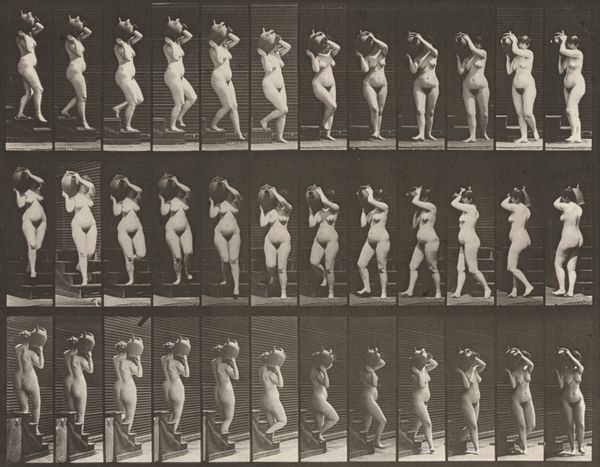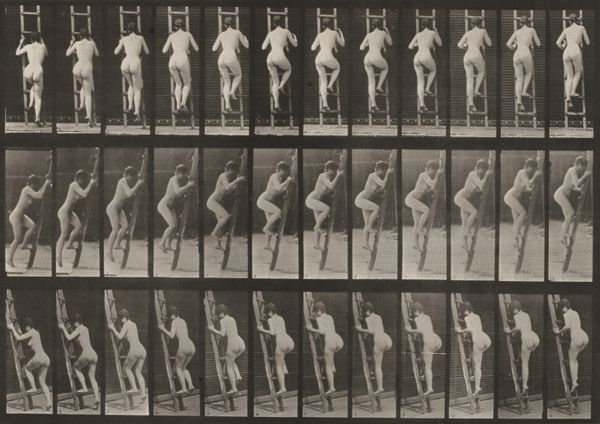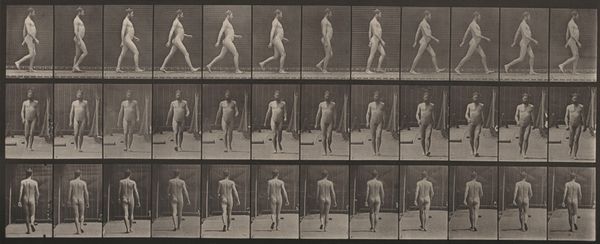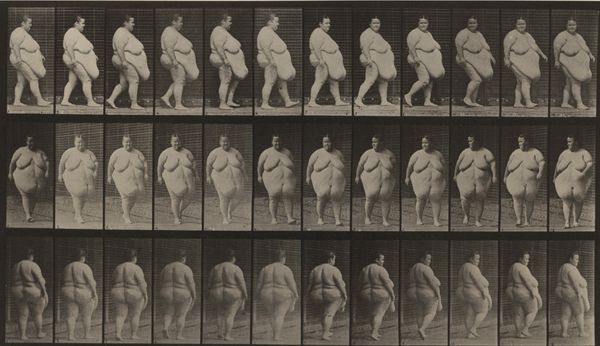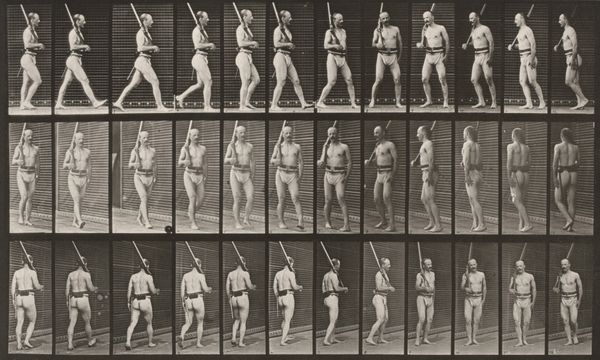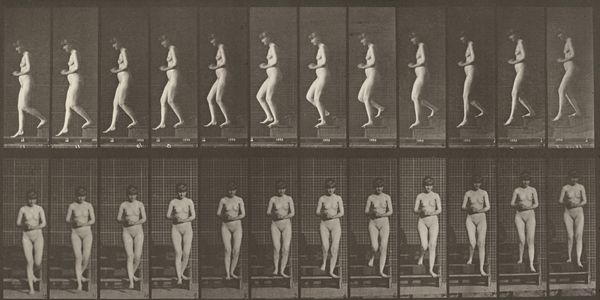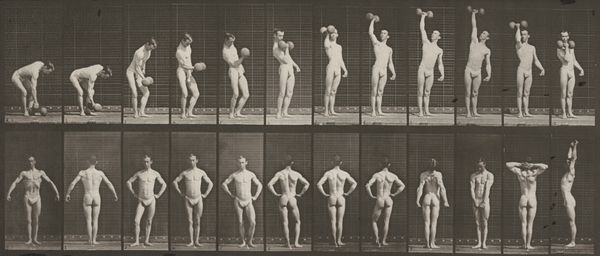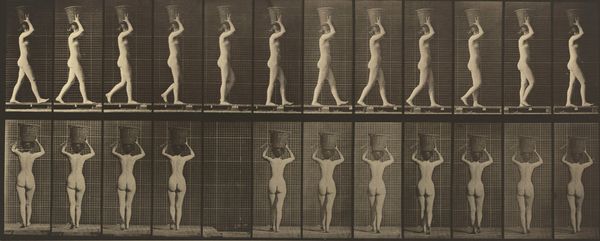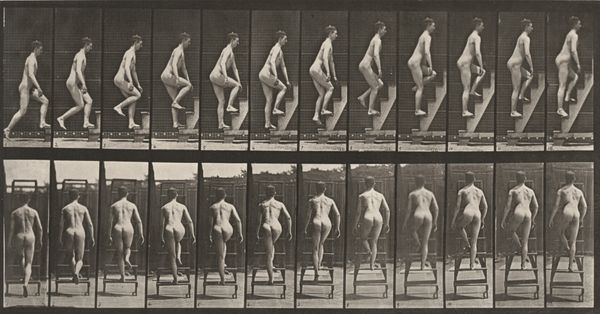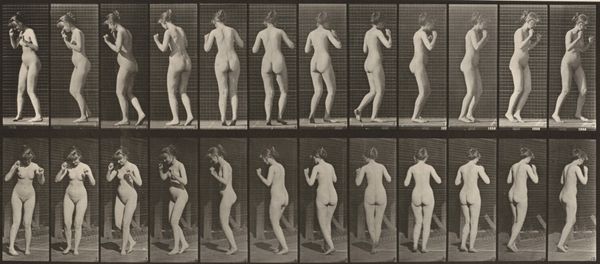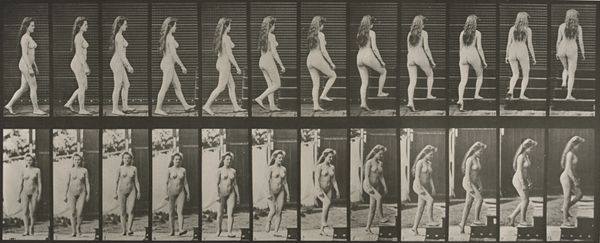
Plate Number 352. "Shoulder," "order" and "carry arms" 1887
0:00
0:00
print, photography, gelatin-silver-print
#
action-painting
#
portrait
#
kinetic-art
# print
#
photography
#
gelatin-silver-print
Dimensions: image: 24.6 × 30.3 cm (9 11/16 × 11 15/16 in.) sheet: 48.5 × 61.3 cm (19 1/8 × 24 1/8 in.)
Copyright: National Gallery of Art: CC0 1.0
Editor: Here we have "Plate Number 352. 'Shoulder,' 'order' and 'carry arms'" a gelatin silver print from 1887 by Eadweard Muybridge. It's quite striking—almost like a flipbook flattened onto a single plane. It's fascinating to see movement broken down so scientifically, and yet it still manages to have a rather odd, performative quality. What catches your eye when you look at this? Curator: Well, isn’t it something? Muybridge was forever chasing the fleeting moments we barely perceive. The charm, for me, is the human element juxtaposed with such stark clinical intent. It's like peering into the past, a sort of Victorian-era CGI, attempting to capture what a glance might otherwise miss. Doesn't it strike you as strangely beautiful, this pursuit of exactitude? He’s stripping things down to bare mechanics. A body. A gun. Ordered movement. Editor: I can see that! So, you think that this scientific breakdown of movement elevates the action beyond just… well, carrying arms? Curator: Precisely! We see not just the action, but also a suggestion of the infinite possibilities within a simple gesture. There is a rhythm created here - each snapshot resonating together with what precedes and what follows to create a song of light and form. Don't you see echoes of early cinema and the seeds of so many modern explorations with time, the body and identity? Editor: Wow, I didn't think about it that way! It’s less a still image, more an anticipation of what comes next. Like a promise. Thanks, that makes so much sense. Curator: The magic is often in those spaces between intent and observation, between frames, isn’t it?
Comments
No comments
Be the first to comment and join the conversation on the ultimate creative platform.

